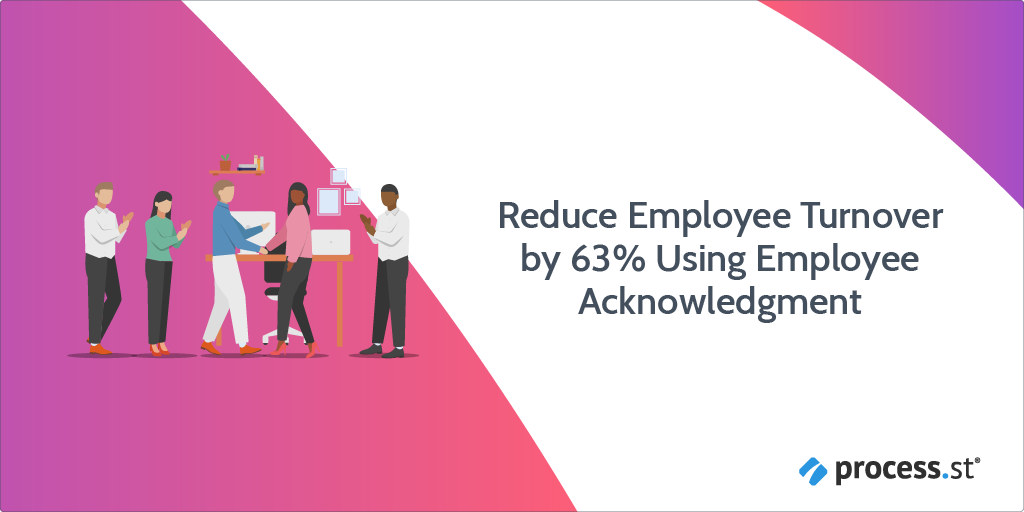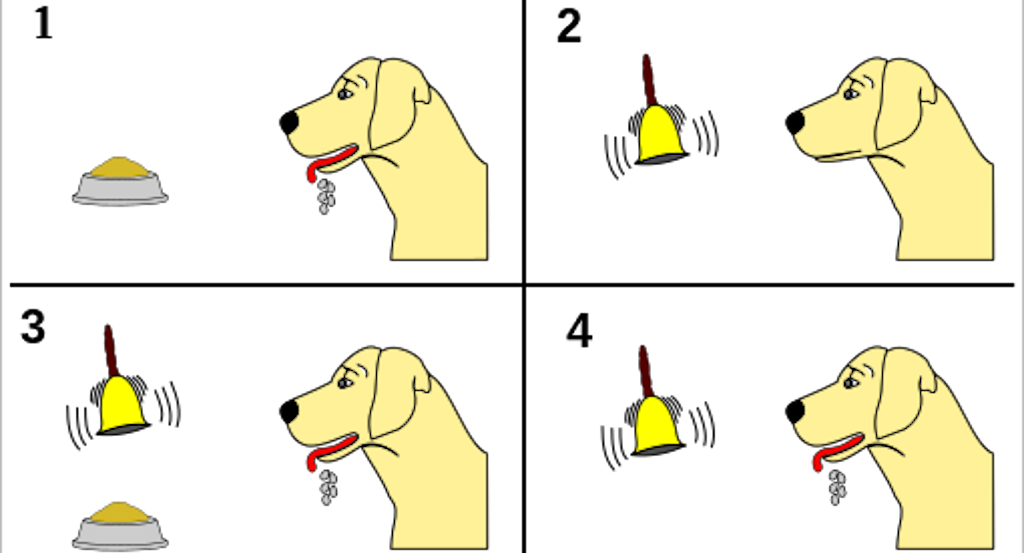
This is a guest post by Katerina Mery, a marketing specialist at Fond. Fond is a rewards and recognition company dedicated to building places where employees love to work. Mery authors articles about how to leverage recognition programs to drive company success.
Think back to the last time a colleague acknowledged you for a job well done.
How did you feel?
Did the experience have an impact on your behavior moving forward? Did the exchange affect your relationship with the person thanking you? What about your relationship with the company in general?
63% of employees who are acknowledged for the work they do are unlikely to look for a new job. Expressing gratitude at work takes relatively little effort, but it can create an incredibly memorable professional experience. Knowing that you did a good job is one thing, having a colleague call out your great work takes the experience to another level.
Business objectives can sometimes feel at odds with an enjoyable employee experience. Employee acknowledgment, however, is a practice that effortlessly supports both.
From this Process Street article, you’ll learn how employee acknowledgment simultaneously caters to your organization’s business objectives. You’ll also learn how to meet the emotional needs of your employees using fantastic positive feedback loops that generate continual improvements across the board.
We say employee acknowledgment is a smart initiative a company can adopt – but before you take our word for it, allow us to explain why.
Click on the relevant subheader below to jump to your section of choice, alternatively scroll down to read all we have to say.
- What is employee acknowledgment?
- Employee acknowledgment and its effects on workplace psychology
- How employee acknowledgment benefits employee wellbeing
- The organizational benefits of employee acknowledgment
- Use Process Street for your employee acknowledgment strategy
What is employee acknowledgment?
Employee acknowledgment is a simple tag-line of appreciation at the end of an email. It’s a manager writing cards/direct reports to let employees know they’re doing a good job. Employee acknowledgment is treating your team to lunch.
Although, it’s also true that employee acknowledgment can be a simple thank you after the completion of a given work assignment.
If your company’s strategy depends entirely on individual team members going out of their way to express gratitude, then it’s time to rethink your approach.
As with all business initiatives, if you want recognition to have an impact, it’s best to establish a formal program that’ll ensure goals are adequately supported.
Depending on your company’s size and culture, these initiatives can come in many forms.
Larger organizations will use employee acknowledgment software (such as Process Street). Such software will streamline recognition processes in a single platform and offer key functions such as recurring reminders and recommended recognition occasions, keeping the program running strong. Smaller companies might find that an internally managed program works best for them, which again Process Street can help with – as shall be explained, keep reading.
Think carefully about your company’s objectives and resources to determine what is your best fit.
Simple ways to acknowledge employees in the workplace include (as given by Gethppy ):
- Give shout-outs: Public acknowledgment is a great way to inspire and motivate people. At Process Street we begin our weekly team meetings by giving Kudos to other team members for their great work.
- Offer fun projects and personal development opportunities: There’re always going to be some project that everyone wants to do. Try and distribute these projects equally throughout your team. Additionally, encourage employees to develop new professional skills and interests.
- Take them out to lunch: Taking your employees out to lunch will show you care and give them 1:1 time they wouldn’t typically get.
- Distribute non-cash rewards: Think about giving a gift card to a coffee shop, scratch tickets, movie tickets, or other universally-appreciated gifts to thank your employees for their hard work.
- Loosen the reins: Provide flexible work options, and let employees work outside or from home part-time.
- Throw a competition, party, or potluck: Employee acknowledgment doesn’t have to mean direct praise, it can be a fun break from the norm as well. Consider throwing a competition – which can be work or non-work-related.
- Encourage peer-to-peer recognition: Recognition is great coming from a manager or the executive level, but it’s also appreciated when it comes from peers. Get everyone involved in the employee acknowledgment process.
- Say thank you: A simple but powerful gesture that lets your employees know they’ve done a good job.
Employee acknowledgment and its effects on workplace psychology
Workplace psychology is the study of the day-to-day individual and collective human behavior in the workplace, which can be influenced, changed, and improved to benefit both employees and organizations. Employee acknowledgment has a positive impact on workplace psychology as shall be explained.
Besides generally making people feel good, the practice of employee acknowledgment can have a powerful positive impact on your team’s behavior.
Why?
In part, the efficacy of employee recognition programs traces back to the fact that they capitalize on one of the most fundamental theories of behavioral psychology: The law of positive reinforcement.
What is positive reinforcement?

The law of positive reinforcement states that rewarded behavior is repeated.
Psychologist Ivan Pavlov led the earliest investigations into this phenomenon. In a simple demonstration of the effect, Pavlov trained his dog to respond positively to the sound of a ringing bell by intentionally creating an association between the bell’s sound and the delivery of a treat.
Over time, the dog learned to associate the intrinsic pleasure of the treat, or reward, with the sound of a bell. The field of behaviorism was further developed by B.F. Skinner, who extended and refined the many possible applications of behavioral reinforcement — among them, employee acknowledgment.
It isn’t hard to see how the process of employee acknowledgment parallels this fundamental law of human behavior. When an employee does something good, they receive a reward which, presumably, they enjoy. To recreate the positive experience, that employee is likely to demonstrate the same good behavior again in the future.
Through this positive feedback loop of rewarding great work, leaders who regularly practice employee acknowledgment strengthen their teams – and therefore, their company – using this powerful psychological phenomenon.
In addition to leveraging the law of positive reinforcement for good, employee acknowledgment programs are a great tool to help leaders live up to the principles of servant leadership, as shall be explained.
What is servant leadership?
Servant leadership has proven to be an incredibly effective method of team management, with a range of positive outcomes such as creativity improvements and better overall job performance.
At its core, servant leadership necessitates a mindset shift from individual to group success. Leaders must begin to regard their primary job function as serving and supporting employees, as opposed to serving and supporting themselves.
Critically, servant leadership also helps employees discover and/or realize their passions via listening and careful questioning. Because passions typically tie back to an individuals’ innate strengths, employee acknowledgment is an effective tool for helping guide team members in this direction. In a happy win-win situation, employee acknowledgment helps set up both the leader and their employee(s) for success.
How employee acknowledgment benefits employee wellbeing
How does employee acknowledgment create the ultimate win-win situation? To answer that question, let’s consider how it unfolds at the most granular level we can – the individual employee experience.
The desire to be seen and acknowledged is fundamentally human, and people bring it with them to the workplace. Employee acknowledgment powerfully fulfills that desire in several ways, improving employee wellbeing as shall be discussed.
Employee acknowledgment builds stronger peer-to-peer relationships
There’s a myriad of factors that go into creating strong bonds between colleagues, but one of the most critical is gratitude. As simple as it sounds when peers make a habit of calling each other out for positive contributions it makes an incredible impact on the quality of relationships they share.
The effect of employee recognition on peer-to-peer relationships operates in two directions.
For one, by habitually recognizing coworkers for outstanding work, employees are primed to look for the positives in teamwork, meaning their brains are more receptive to noticing great things going on in the workplace. Naturally, this creates a shift in perception for the better.
The other direction is more obvious: Employees who receive recognition can bask in the great feeling that their hard work is not only seen but deeply appreciated. This is the perfect segway into our next point.
Employee acknowledgment promotes visibility
It’s frustrating to feel like you gave a project your all and no one noticed. This is often because of misconception. Few people are in the habit of letting others know they’re appreciated, and what goes unsaid is not assumed.
Employee acknowledgment helps fight that frustrating feeling of working in a void by giving employees a tool to explicitly call each other out for great work. Also, an employee acknowledgment program will equip employees with the needed guidelines for knowing exactly what recognition should look like. For instance, features like custom recognition occasions, monthly point budgets, etc. These all help clue employees into what the content and frequency of peer-to-peer recognition should be.
Employee acknowledgment hosted on a public social feed also promotes visibility by letting employees in other departments or offices see the wins of their further off counterparts. This brings your team closer together and contributes to a better employee experience.
Employee acknowledgment enhances life outside the office ✨
Today, most employee recognition programs incorporate the concept of redeemable points. That is, participants mark points onto notes of appreciation that they want to use to make a significant impact. These points can then be used to redeem rewards of the recipient’s choosing.
From clothing to meal delivery services, to fitness and electronics, the rewards don’t necessarily have to have anything to do with work – but knowing they were earned through the effort put in at the office creates yet another boost to the employee experience.
Any time your employee enjoys using their new reward (whatever it may be), they’re reminded that they work for an organization committed to improving their lives both on and off the clock.
Employee recognition comes with a lot of benefits for the individuals who participate in the program – and that shouldn’t be a surprise. It’s a simple, feel-good initiative that leverages gratitude to boost morale and bring teammates closer together.
What’s slightly more surprising is the heavy influence employee recognition has on the business. In the next section, we’ll share three of the most compelling organizational transformations that come when companies have effective employee recognition programs.
The organizational benefits of employee acknowledgment
Competitive companies in the modern world know that winning requires a lot more than a sharp value proposition and a compelling case against competitors.
With an effective employee acknowledgment scheme, significant cultural advantages are brought to, and benefit an organization, as shall be explained.
Employee acknowledgment differentiates your company
Almost every organization will claim that they have a fantastic company culture – which is no surprise.
Company culture is reported to be one of the most important factors to consider for job-seekers when searching for a new position.
That said, the most competitive members of the talent pool will want more than a wishy-washy claim their organizational culture is to die for. It’s far more convincing if you can point to specific, formalized practices your company uses to support a strong culture.
Employee recognition programs are a clear indication that your company is willing to invest in tangible resources that’ll uphold a great company culture.
Provide unique insight into the specifics of what makes your company culture unique. That might mean a notable initiative you recently incentivized through employee recognition or core values that your team reinforces through custom recognition occasions.
Employee acknowledgment boosts productivity
Another surprising side effect of a thriving employee recognition program is that it boosts productivity. This benefit is somewhat indirect, but the logic straightforward nonetheless.
Through the many individual benefits detailed in the preceding section, employee recognition programs contribute to both higher morale and higher engagement. Studies show that more highly engaged employees produce the same quality of work in a shorter time period compared to their less engaged counterparts. Because engaged employees are dialed into their roles and responsibilities, they can focus better and do more in less time. Most people have experienced this effect firsthand.
Unsurprisingly, more productive workforces also accomplish more and have higher profits. Through a straightforward chain of events, employee acknowledgment programs contribute to a more profitable company.
Employee acknowledgment decreases turnover
Employees voluntarily leaving their vocation costs an average of $1 trillion each year. Once more, 52% of these lost employee cases were preventable.
Turnover is one of the most costly challenges for HR teams. Employee acknowledgment programs counteract employee turnover by boosting job satisfaction and keeping colleagues connected and engaged.
The reason it works is simple: Employees who feel that they are valued and important members of the team are a lot less likely to go looking for employment elsewhere.
Research confirms this effect: Companies with effective employee recognition programs have a 31% lower turnover.
Use Process Street for your employee acknowledgment strategy
Process Street is your workflow management solution that’ll drive best practices and processes, firmly establishing your employee acknowledgment program into the core of your organization.
With Process Street, you can document any business operation using our no-code software solution, producing checklists that can be distributed across teams. For any documented operation, all team members have to do is follow the process. When this process contains key employee acknowledgment steps, it’s easy to fathom how Process Street acts as a vital tool driving acknowledgment in the workplace.
For more information on how you can create and edits checklists using Process Street, watch our below video:
Add features to your documented processes, such as:
- Stop Tasks to ensure your documented processes run in the correct order, and no important employee acknowledgment tasks are missed.
- Dynamic Due Dates ⏰ allowing you to set due dates on specific tasks, ensuring no deadline is missed. This will help your employees keep to important deadlines, and meet the demands of their work.
- Conditional Logic to create dynamic systems that cater to your user’s specific needs each time they are run. The needs of one employee will differ from the needs of another, create processes with an appropriate level of flexibility.
- Role Assignments to ease task delegation within your team, streamlining and promoting effective teamwork that’ll drive employee acknowledgment.
- Approvals ✅ allowing decision-makers to give the go-ahead (or rejection) on important system items. Also, the necessary comments can be provided. This streamlines feedback – and acknowledgment – processes between team members and more senior personnel.
- Webhooks allow you to send automated messages or information from your documented processes directly to other apps. A great feature keeping your other tools notified about the status of checklists and tasks in Process Street, meaning everyone knows who is doing what and when so hard work isn’t overlooked.
- Task Assignments to assign users and groups to individual tasks in your documented processes, making it easy to see who is responsible for what, again meaning hard work isn’t overlooked.
- Embed Widget allowing you to view and interact with other apps without leaving your documented process in Process Street.
- + more!
Use your employee acknowledgment program for a better organization and happier employees
Keep in mind that the benefits we’ve shared today spring from an effective employee acknowledgment program – that means a thoughtful, culturally-aligned program, with clear analytics, and a streamlined platform that makes delivering recognition frictionless.
Once you’ve designed an employee acknowledgment program that fits your company’s needs, everybody wins. It is clear how employee acknowledgment can benefit both a business and individual employees, creating an ultimate win-win situation.
What employee acknowledgment programs do you use in your organization? What programs have been most effective? Let us know in the comments below!







 Workflows
Workflows Projects
Projects Data Sets
Data Sets Forms
Forms Pages
Pages Automations
Automations Analytics
Analytics Apps
Apps Integrations
Integrations
 Property management
Property management
 Human resources
Human resources
 Customer management
Customer management
 Information technology
Information technology




Jane Courtnell
Hi there, I am a Junior Content Writer at Process Street. I graduated in Biology, specializing in Environmental Science at Imperial College London. During my degree, I developed an enthusiasm for writing to communicate environmental issues. I continued my studies at Imperial College's Business School, and with this, my writing progressed looking at sustainability in a business sense. When I am not writing I enjoy being in the mountains, running and rock climbing. Follow me at @JaneCourtnell.